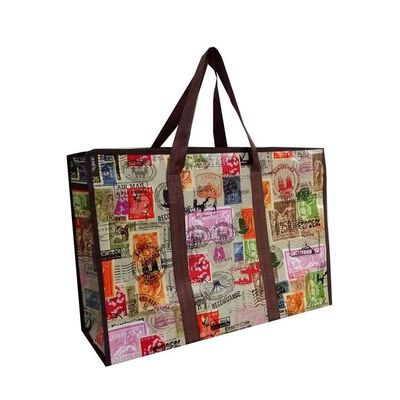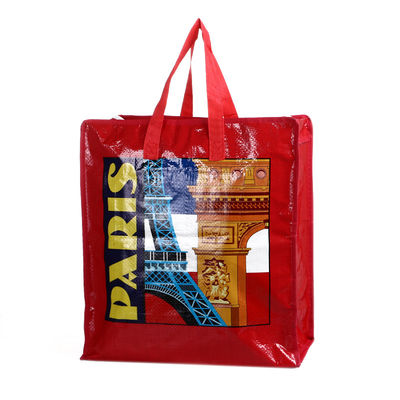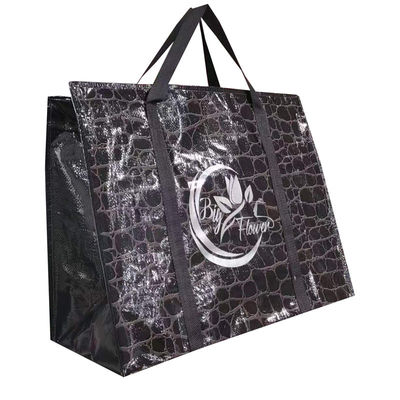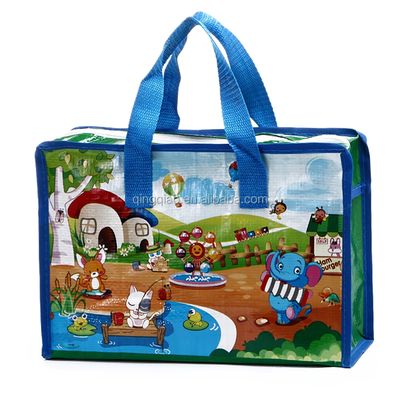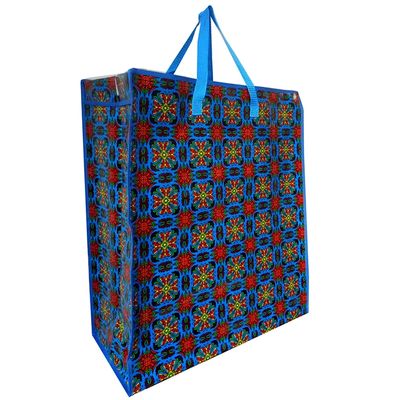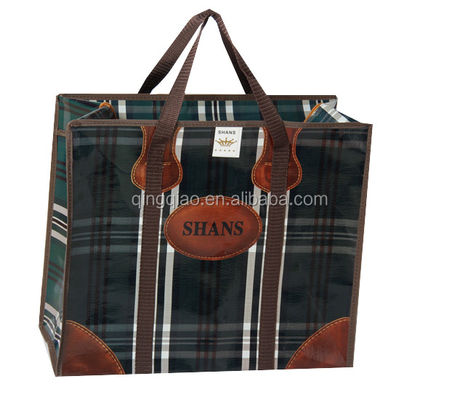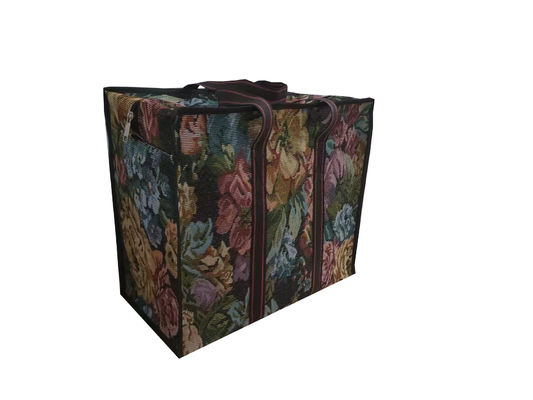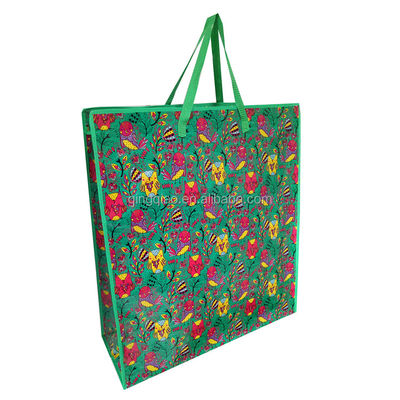How to choose the right non-woven bag
When choosing a suitable non-woven bag, you can consider the following aspects:
1. Materials and quality
The material and quality of non-woven bags are very important considerations. First of all, you need to understand the material of non-woven bags. For example, non-woven fabric is a kind of non-woven fabric that is directly formed by using polymer slices, short fibers or filaments through various web forming methods and consolidation technologies. New fiber products with soft, breathable and flat structure. When choosing non-woven bags, you can choose non-woven fabrics of different weights. For example, an 80-gram non-woven fabric can bear a load of about 6kg. If you need a better quality non-woven bag, you can choose 90 grams or thicker non-woven bag. Secondly, you need to check the quality of the non-woven bag. For example, the load-bearing requirement of the non-woven bag is 80 grams. The load-bearing capacity of the non-woven handbag should be greater than or equal to 10 kilograms, and the handle and edges should be firm. In addition, the size deviation of the non-woven bag cannot exceed 0.5cm, the center angle of the printing plate is positive, the distance from top to bottom, left and right is appropriate, the color registration must be accurate, and the distance deviation cannot exceed 0.1cm.
2. Size and purpose
The sizes of non-woven reusable bags include reusable bags, mini reusable bags, extra large reusable bags, etc. Therefore, it is necessary to choose reusable bags that meet the size according to the number of tools to be packed, so that the best use of materials can be achieved and waste can be avoided. Due to different uses, we often need different types of reusable bags, such as thermal insulation reusable bags, silver-faced reusable bags, etc. When purchasing, you should choose a more suitable reusable bag based on your regular use.
3. Printing and Design
When choosing a non-woven bag, you also need to consider printing and design. Non-woven bags can be advertised through silk screen printing, so you need to consider the printing quality and design style of the non-woven bags. For example, you can choose water-based elastic glue as a printing method for printing media. This printing method has good tinting strength, strong covering and fastness, washability, and basically no odor. In addition, you also need to consider the design style of the non-woven bag. If it is packaging products and promoting and advertising products, then the overall design style of the bag must be consistent with the style of the packaged product.
4. Manufacturer selection
Finally, you also need to consider manufacturer selection. When choosing a non-woven bag manufacturer, you need to look at the manufacturer's strength, product quality, after-sales service, etc. Competent non-woven bag manufacturers strictly abide by national standards, strictly supervise and manage each production process, and strictly control quality before leaving the factory. In addition, good non-woven bag manufacturers not only pay attention to the quality of non-woven environmentally friendly bags, but also pay more attention to the after-sales service of their products. Once after-sales problems arise, they will actively and properly solve them and strive to satisfy customers.
To sum up, choosing a suitable non-woven bag requires comprehensive consideration of factors such as material and quality, size and use, printing and design, and manufacturer selection. Hope the above information is helpful to you.
Non-woven bag size selection tips
Choosing the appropriate size of non-woven bags is an important task because it not only relates to the loading capacity and appearance of the product, but also directly affects advertising
performance and user experience. The following are non-woven bag size selection tips:
1. Determine the purpose
The size of the non-woven bag should be determined according to its purpose. Different industries and occasions require different sizes of non-woven bags. For example, non-woven bags used in supermarkets are usually larger, while non-woven bags used to load summer clothes need to be large enough to hold the clothes.
2. Consider loading items
When choosing the size of a non-woven bag, you should consider the size and shape of the items you want to load. Make sure you choose a size that will fit most loads, but also consider whether the shape of the load will affect the overall balance of the bag.
3. Pay attention to economy and practicality
When choosing a size, economy and practicality should be taken into consideration. Bags that are too large or too small can lead to unnecessary waste. Generally speaking, the size of non-woven bags should be slightly larger than the load to facilitate loading and carrying.
4. Consider advertising effectiveness
Non-woven bags are often used as advertising tools, so their size should also take this into consideration. The right size can improve the visibility and communication effectiveness of your ads. For example, a size of 40cm high, 30cm wide and 250px on sides is suitable for pure promotional purposes.
5. Refer to industry standards
Although there are no uniform sizes for non-woven bags, there are some sizes that are more commonly used in specific industries. For example, some companies, schools and exhibitions use non-woven environmentally friendly bags to hold A4 paper-sized materials. The size is usually 30 (width) * 40 (height) * 10 (side).
6. Consider production costs
Different sizes may have an impact on production costs. Bags that are too large or too small may increase production costs or reduce loading efficiency. Therefore, costs and benefits should be weighed when choosing size.
7. Communicate with manufacturers
If you have any questions about the size of non-woven bags, the best thing to do is to communicate with a professional non-woven bag manufacturer. They can provide you with professional advice and help you design a non-woven bag that meets your needs.
To sum up, choosing the size of a non-woven bag requires considering a number of factors. With the tips above, you can make a more informed choice about the right size to meet your specific needs.
Non-woven bag size industry standards
Before discussing the industry standards for non-woven bag sizes, we need to understand some basic concepts and uses of non-woven bags. Non-woven bags are an environmentally friendly packaging material that is widely used for its flexibility, breathability and reusability. They can play a role in many industries, such as shopping bags, handbags, advertising promotion gifts, etc. Since different uses may require different sizes of non-woven bags, industry standards often allow a certain range of size variations, and usually provide some common sizes for manufacturers and consumers to refer to.
Common sizes
According to the search results, we can learn about some common non-woven bag sizes. These dimensions include:
Non-woven vest bag: Common specifications are 320mm wide, 600mm high, 180mm sides, 240mm wide, 370mm wide, 120mm wide, 300mm wide, 540mm high, 150mm wide sides.
Non-woven flat bags: The width is generally 260mm-600mm, the height is 150mm-600mm, and the teeth on both sides of the bag are 5mm.
Other commonly used sizes: such as 10 inches 24×30×6cm, 12 inches 30×35×8cm, 16 inches 45×35×8cm and 20 inches 60×50×8cm, etc.
Custom size
Although there are some regular sizes, the size of non-woven bags can also be customized according to customer needs. This means that if a business or consumer needs a non-woven bag of a specific size, they can communicate with the manufacturer and have the bag designed and produced according to actual needs.
Corporate standards
In addition to universal sizes, some companies will develop their own corporate standards to ensure that products meet their specific needs.
in conclusion
To sum up, there is no unified industry standard for the size of non-woven bags, but it is determined based on the size and purpose of the items contained. Although there are some common sizes for reference, most non-woven bags can be produced and designed according to customers' customized needs. When companies and consumers choose or customize non-woven bags, they should consider their actual needs and fully communicate with the manufacturer to ensure the quality and applicability of the final product.
.
The best size for non-woven bag promotion
Non-woven bags are a common environmental protection promotional tool, and the choice of their size has an important impact on the promotional effect. Here is some information on the best sizes for non-woven bag promotions.
General principles of non-woven bag size
There is no uniform standard for the size of non-woven bags, but it is determined based on the size of the items contained. When customizing non-woven bags, the size of the items should be taken into consideration to ensure that the bag can hold the items without being too large and causing waste. In addition, the size of non-woven bags needs to be selected according to the actual use, such as thermal insulation environmental protection bags, silver surface environmental protection bags, etc.
Common non-woven bag sizes
Some common non-woven bag sizes include:
Small bag: suitable for A4 paper size materials, usually 30cm (width) * 40cm (height) * 10cm (side). Bags of this size are usually used by corporate entities to hold materials.
Medium-sized bags: Such as A3 paper-sized non-woven bags with dimensions of 32cm (width) * 43cm (height) * 10cm (bottom width and side width). They are commonly used in major shopping malls, banks, clothing and shoe stores, etc.
Large bags: such as non-woven bags used in supermarkets, with dimensions of 48cm (width) * 35cm (height) * 10cm (bottom width and side width). Bags of this size are commonly used for supermarket shopping.
Things to note when customizing non-woven bags
When customizing non-woven bags, you also need to pay attention to the following points:
Choose a non-woven bag that meets the actual purpose: Different uses require different sizes and styles of non-woven bags. For example, bags for specific purposes, such as insulated reusable bags and silver-faced reusable bags, will differ in size and design.
Choose strong and durable non-woven bags: Film-coated non-woven environmentally friendly bags are not only strong, but also waterproof, making them more practical.
Avoid using toxic non-woven bags: The ink used by some companies to print patterns on bags may contain toxic substances, which may cause harm to human health after long-term use.
in conclusion
To sum up, the size of non-woven bags should be selected according to actual needs and uses to ensure that it can achieve the ideal publicity effect and meet the needs of loading items. When choosing, you should pay attention to avoid using non-woven bags that are harmful to health, and give priority to strong and durable products. The final choice should be made based on your business's specific needs and target audience.
Non-woven bag customization guide
Non-woven bags are environmentally friendly and practical shopping bags. Its customization process includes the following steps:
1. Fabric selection
First of all, choosing the right fabric is the key to customizing non-woven bags. High-quality fabrics can significantly enhance the appearance and durability of non-woven bags. The ideal fabric should have the following characteristics:
The surface is glossy for easy printing and display of high quality products.
The difference in longitudinal and transverse tensile forces is small to ensure the excellent performance of the bag in terms of load-bearing.
It feels slightly stiffer to make it easier to lift and load items.
2. Design draft finalized
Next, you need to determine the design draft of the non-woven bag. This includes the size, style, color and printing of the bag. You can design it yourself or entrust it to a professional design team. At this stage, you need to provide all the details such as bag specifications (width x height x sides), fabric
Material thickness, color, etc. so that the manufacturer can accurately quote and make bags for you:
Provide details such as bag size, style, color, etc.
Determine the printed content, including text and graphics.
Choose printing process, such as screen printing, offset printing, lamination printing, heat transfer printing, etc.:
3. Plate making
After the design draft is finalized, a printed version needs to be produced. A professional pattern maker will make the layout based on the design draft, which is an important link that affects the quality of the final product. The quality of the plate will directly affect the printing effect of non-woven bags:
The layout is made by professional plate makers.
The quality of the layout has a great impact on the printing effect of non-woven bags.
4. Printing
Printing is an important step in non-woven bag customization. Depending on your choice, you can choose different printing processes, such as screen printing, offset printing, lamination printing, heat transfer printing, etc. Each printing process has its own characteristics and applicable scenarios. Choosing the appropriate printing process can ensure that the printing effect of the bag meets your needs:
Choose a suitable printing process.
Pay attention to the fullness and size of printed text and patterns.
5. Assembly
After printing is completed, it is the assembly process. This involves combining printed non-woven fabric pieces, adding accessories such as handles and hems, and finally sewing them together by sewing. The details during the assembly process are also very important, such as whether the interface between the handle and the large piece of fabric is crisscrossed, how many lines are running on the side, etc.: Combine the printed non-woven fabric pieces. Add accessories such as handles and hemming, and sew them together by sewing.
6. Packaging and shipping
Once assembly is complete, the non-woven bags will be packed and ready for shipment. Manufacturers usually choose appropriate packaging methods according to customer requirements, such as woven bag packaging or carton packaging. The packaged non-woven bags will be delivered to customers intact: choose the appropriate packaging method.
Deliver the goods to customers intact.
Through the above steps, you can customize a non-woven bag that meets your needs. Remember, each step has an impact on the quality and effectiveness of the final product, so be careful throughout the process.

 Your message must be between 20-3,000 characters!
Your message must be between 20-3,000 characters! Please check your E-mail!
Please check your E-mail!  Your message must be between 20-3,000 characters!
Your message must be between 20-3,000 characters! Please check your E-mail!
Please check your E-mail! 
